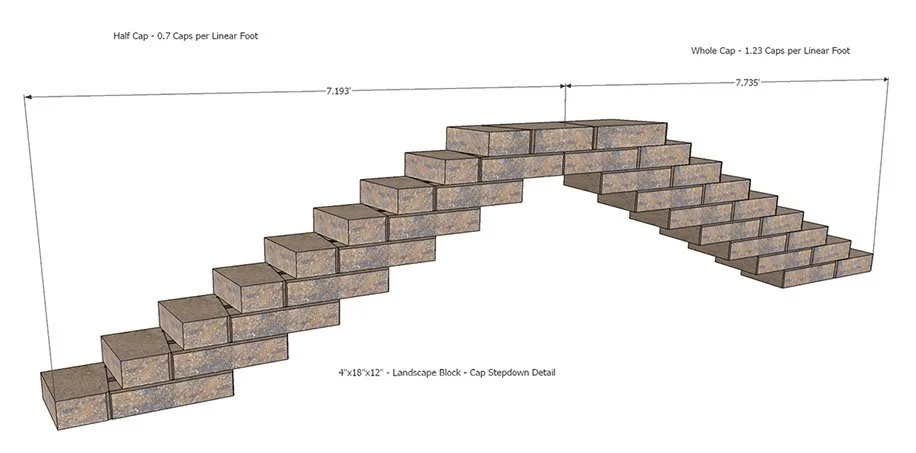Trap Cap Block

ESTIMATING:
45 lbs
2.89' Radius
Avg Linear footage (straight) = 14.5" per block
Avg Linear footage (radius) = 17" per block
Block per pallet = 63 (varies by region)
Universal Cap
The perfect cap for just about any situation. This cap is able to go straight as well as turn without making cuts. Capable of turning a radius as tight as 4.3325" (depending on region) the universal cap is one of the most versatile on the market. A split face on both the front and the back along with a symmetrical design allows for flipping and turning. Notches on the side make it easy to handle. Typically comes 56 to a pallet.
Frequently Asked Questions
-
Through the most powerful form of connection which is Rock Interlock. By filling the cores with crushed limestone (#57 or #67) GeoStone utilizes friction to lock the units together. Much like Velcro (on a much larger scale of course) the connection is based on direction of applied strength. Pulling two strips of Velcro apart, up / down, is not very difficult. Pulling them apart, side to side, or horizontally is near impossible. That is because there is literally thousands of connection points. This is very similar in concept to GeoStone and Rock Interlock. The gravel has thousands of connection points in each core of each block. If one or many of those points shift, they reform connection with the many other points within the cell. A wall's connection is meant to resist horizontal or lateral pressures exerted from behind.
-
The answer to that would largely depend on the situation. The industry standard (rule for all SRW's) is that you should put grids no less frequent than every two feet in height. Factors like slope, soil conditions, backfill material, and surcharge (loading) can have an effect on frequency of grid placement and the length / strength of the grids. Remember, adding a layer or two of grid is cheaper and easier than rebuilding a wall.
-
There again, that largely depends on the situation and your skill-set. If you are a DIY kind of person and you feel confident that this is something you would like to tackle, then by all means try it. This does not mean that you should attempt to build a 20' tall wall with a pick and shovel. Anything 4 ft and higher within most city limits is considered a structural retaining wall and requires a permit and/or an engineer stamped wall design. I will always recommend at least talking to a professional installer or GeoStone specialist before attempting to build anything 4 ft or higher. If you have any questions, call us (205) 678-9969
-
First off, both are equal in strength due the same footprint and connection properties. Large commercial or anything over 16 ft tall - definitely the 8" block. This is due to extreme pressures that may require more compression resistance that are typically not present in most residential applications. Anything else, I would use the 4" block. The 4" builds faster, looks better, and is so much easier to work with. It is easier to maneuver, to carry, and its flexibility is unmatched. Not to mention, its overall look is unique and there is nothing else out there like it. You can also combine the two to create banding or Ashlar.
-
There is something we just came out with that is kind of an "Easter egg" in our website. If you will notice, there are two blocks in either corner of the bottom menu. Click the one on the left and it goes to our Online presentation or "sub-web" that we use to help train people who already know the basics of modular wall construction. This is "next level" instructions on what makes GeoStone unique and how to do certain procedures only the professional installers know. Good luck and as always, if you have any questions, please call us at: 205-980-0770







